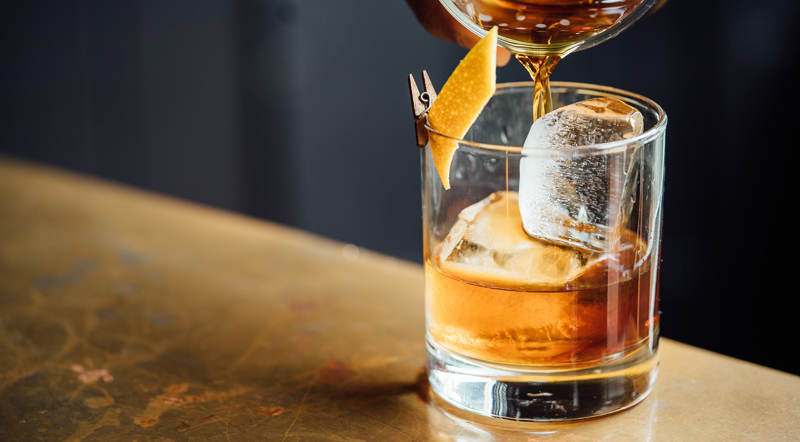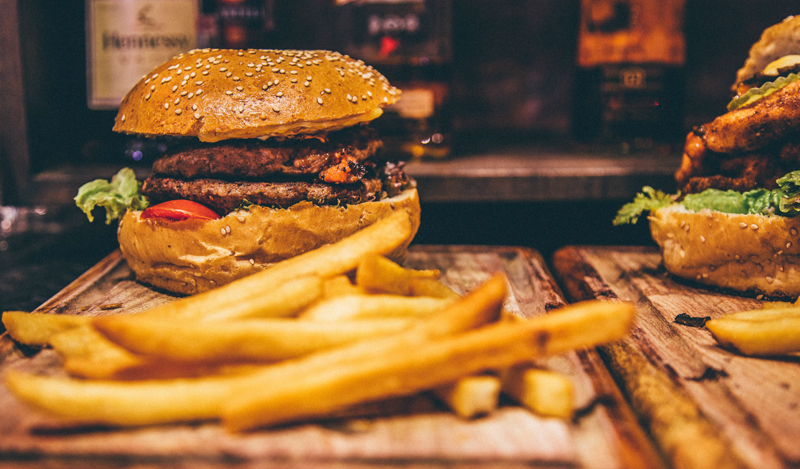Alcohol is an interesting drug. Among most people in the world, it’s generally acceptable to consume regularly and has been abused by us humans for a very long time. People die every day from this drug, so yeah, keep that in mind.
On a fat loss diet, drinking tends to be off limits because of the following reasons:
- It has no nutrition
- It’s relatively dense at 7 calories per gram
- It causes us to overeat more easily (lowering inhibition)
- It can make us store fat more easily when combined with fatty foods (more on this in a bit)
But alas, if you enjoy drinking and want to keep it a part of your life, whether it be for social or other reasons, this quick article is for you.
At the end, I’ve included some guides (pulled directly from my 4D Fat Loss Course) to help you make better decisions with your drinking and dieting efforts this year.
Storing Fat Is Much Easier When Drinking And Dining
Our bodies are really good at storing fat. And when we mix alcohol into the picture, it gets even better with this process.
When you eat a meal, the protein is broken down into amino acids for use in tissue repair and muscle protein synthesis. The carbs are broken down into glucose for the brain and used as energy or stored as glycogen by the muscles and liver.
The fat is broken down into fatty acids and stored in your fat cells. Whether or not you lose or gain fat will depend on your calorie balance (deficit, maintenance, or surplus intake).
But when alcohol passes through your liver, it converts into something known as acetate, which is toxic to the body. So your system switches from using protein, carbs, and fat for fuel, and turns to burning up the acetate.
Alcohol alone contains no fat, protein, or carbs, and won’t convert into fat that can be stored.
When we consume alcohol with energy-dense, fatty food, it creates the perfect fat-storing scenario. And if you’re trying to lose body fat, or at least maintain your six-pack abs, you must have a strategy for incorporating alcohol into your diet.
And if you’ve ever been out drinking before, you know how it lowers inhibition, making it easier to give into that large order of chili cheese fries and a few slices of pizza. We’ve all been there.
Combine lots of drinking with all that fatty food while eating about your caloric needs for the day, and you’re sure to store a good amount of fat that night.
I share the strategies to minimize this at the end of this article.
When Dieting, Getting Drunk Is Much Easier (So Be Careful and Pace Yourself)
When you’re purposely under eating to lose body fat, you’re low on two things:
- Muscle glycogen
- Calories consumed (potential empty stomach depending on when you last ate)
It’s not unheard of to get drunk on fewer drinks when dieting. It’s happened to me and many others I’ve coached. So keep in mind that enjoying drinks and managing your fat loss diet is much easier than you might think.
If you happen to drink on an empty stomach, then the alcohol is going to hit you harder because there’s no food in your system.
So, absorption and the mind-altering effects will happen faster than if you had a meal with the booze. And if you’re dieting, you’re probably not walking around with a full stomach at all times.
Here’s How To Minimize Fat Gain While Still Enjoying Alcohol
There are 2 main factors that will enable you to limit fat storage on your fat loss diet. Those are:
- Keeping yourself in a dietary deficit
- Avoiding a high fat intake during the day and around the meal you have drinks with
If you follow those two rules when drinking out, you’ve pretty much covered all your bases.
In 4D Fat Loss, I’ve set up the diets protocols to keep you in a deficit during the week by alternating high and lower calorie days. But the guidelines below can be used regardless of how you’re maintaining a dietary deficit.
On the days you’re planning to drink alcohol, always have a plan. At best, you want to maintain your daily dietary caloric deficit. At worst, you want to ensure you hit your maintenance intake. If you follow those rules, you won’t put on any fat from the excessive alcohol intake.
If you do go over your daily maintenance calories, and lots of the calories are from fat and alcohol, you will store some body fat. Try to avoid this.
Remember — alcohol is a form of calories. And to lose body fat, it’s all about controlling your calories and maintaining a dietary deficit.
It’s generally recommended to keep drinking to a minimum, especially when dieting due to how it affects fat loss and even muscle protein synthesis. So if muscle maintenance and/or gains are a priority, I’d keep alcohol intake to no more than a few times per month.
Here are the guides pulled straight from the 4D Fat Loss Main Guide. Enjoy.
On the days you decide to drink, the main idea is to create a ‘sink’ for extra calories. On these days, especially if it’s a lower calorie day, you’ll want to create a buffer by setting your daily calories at around maintenance (refer to the 4DFL calculator to know a figure, or look at your food tracking history).
If you can maintain the goal deficit calories, all the better.
For these examples, we’re going to assume an average maintenance intake of 2500 calories, and a protein goal of 180 grams per day.
My go-to drink ideas are as follows (but this is totally up to you) in order of least impact with regards to calorie loads:
- Any hard liquor/spirit (1 shot) + diet soda (1 ounce serving = 80 calories)
- Wine (5 ounce serving = 120 calories)
- Cider / Beer (12 ounce serving = 180-200 calories)
When I’m looking to drink with friends, relax and feel a good buzz, I mostly go with rum or vodka mixed with diet soda.
Drinks-Only Version
If you and your pals want to go out at night to get drinks only (somewhere in the 2-4 range), then these guidelines are golden:
- Aim to hit your protein and fat intake for the day (aim to keep fat to 15-20% of total calories). This equals to 180g protein, maximum of 40g fat.
- Cut out the total amount of carbohydrate calories for the total amount of drinks you plan to have. Example: 4 shots of vodka = 320 calories. 320/4 = 80g carbohydrates to spare for drinks.
Drinks And Food Version
If you’re going out and want to get drinks (somewhere in the 2-4 range), plus dinner, these guidelines are for you:
- Aim to hit 80% of your protein intake for the day.
- Aim to hit 60% of total maintenance calories before dinner during the day.
For someone at 2500 calories per day, you’ll aim to hit 1500 total calories (60% of maintenance intake) and 144g protein (80% of your goal intake). To make this even more effective, I’d limit my fat intake throughout the day to about 10-15% of calories (which comes out to about 15-25g) to make sure you have some room for your dinner meal and drinks.
Make sure you choose foods that are low in fat for dinner. This way, you’ll be right at maintenance, or just over, without worrying too much about stalling your fat loss for the week.
Getting Hammered Version
If you’re going out and want to get drinks (somewhere in the 5-10+ range), these are the guides:
- Aim to hit 100% of your protein intake for the day.
- Aim to hit 40-50% of total maintenance calories (mostly from protein and carbs/veggies—limit fat intake to 10-15% of total calories as in the previous example) before going out.
- Drink 6-8 ounces of water in between drinks.
- Make sure you have a ride home. Never drive when drunk.
ATTENTION
Remember—with these strategies, you’ll be on fewer calories, so getting shit-faced will be an easy feat.
Pace yourself. And always be responsible when drinking. This stuff is poison (quite literally, it’s poison to the human body), and it can kill you.
People die every single day from alcohol overdose — TO THE TUNE OF 88,000 DEATHS PER YEAR JUST IN THE UNITED STATES
I actually don’t advise drinking at all, but I know people are going to do it. I get these questions a lot, so I know these guidelines will be helpful when you want to enjoy some drinks with friends and not sabotage your diet and results in the process.
Please, be careful if you decide to drink.
I am not encouraging you to drink, at all. I just want to give you these guidelines if you’re wondering how to incorporate drinking into your diet.
Drink at your own risk. It’s best not to do it at all. I’m not your daddy, so do whatever the @$*& you were gonna do anyway.



JC…I love this article, especially your bit at the end. Excellent info and thank for the explanation on how it’s processed…good advice and makes sense.
THank you, Leanne. Glad it was helpful.
JC-
This is a great guideline for drinking on a diet I was explaining this to my wife the other day but this is so more more involved and perfectly explained. Thank you for all the information you share with all of us.
Carl
Thanks Carl. I’m glad it was helpful.